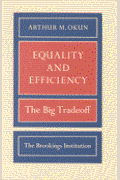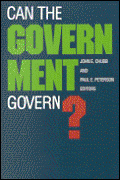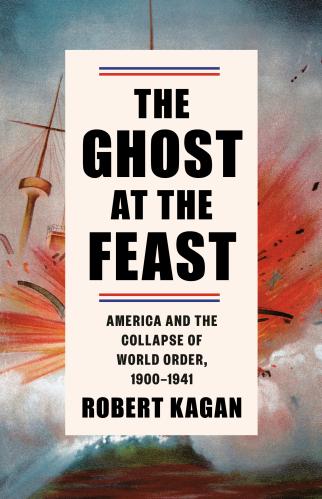Widespread protests pressing for racial justice, in the wake of the horrific killing of George Floyd, spurred organizations across the country to commit to improve outcomes for the Black community, decrease bias, and improve inclusion in their workplaces. The U.S. State Department, the oldest cabinet agency and America’s premier diplomatic tool, is no stranger to these issues.
The broad diversity of the United States is an unrivaled yet underutilized source of strength to project moral authority and global leadership to address the most complex challenges. Building a diverse cadre of senior leaders through mentorship and sponsorship, reinforced by institutional incentives, would project such leadership as well as help attract and retain top diverse talent.
What the data shows
A Government Accountability Office (GAO) audit from February laid bare that diversity gains in the past two decades, particularly from racial and ethnic minority groups, have not broken through to the agency’s higher ranks (see Figure 2 from the report, below). It shows that just 13% percent of State’s Senior Executive Service officers — the highest echelons of the Civil Service — are minorities, even though they represent 43% of the overall Civil Service. In the Foreign Service, people of color make up 24% of the overall workforce, but only 14% of senior officers.

Women account for just 38% of executives in the Civil Service, but comprise 54% of the workforce. The report noted women still only make up 35% of the Foreign Service.
And despite Latinx and Blacks representing 18.5% and 13.4% of the general U.S. population respectively, according to the U.S. Census, they each only make up 7% of the Foreign Service. The senior ranks are even bleaker. The American Academy of Diplomacy (AAD), a nongovernmental organization composed of former senior diplomats, recently lamented that out of 189 U.S. ambassadors serving overseas, there are only three Black and four Hispanic career diplomats.
Why is diverse talent leaving the State Department?
There are a variety of reasons that entry- and mid-level officers quit — from lack of professional growth opportunities, including a lack of turnover in Civil Service positions, to family considerations to instances of outright harassment or discrimination, as recent media reports have brought to light.
Even for those who would like to continue to serve, there is no inevitable “trickle-up” effect. The GAO report indicates although people of color are joining the State Department at representation levels closer to the broader U.S. population, they are promoted at lower rates, which motivates many to leave the Department.
Ambassador Linda Thomas-Greenfield, who heads the Africa Practice at Albright Stonebridge Group and previously served as director general of the Foreign Service, said that without more active retention and promotion measures by State’s senior leaders, diverse talent will continue to fall through the cracks. The State Department needs to draw data from exit surveys to examine why diverse colleagues leave.
Mentorship vs. sponsorship
In a highly competitive yet insular workplace, the professional grooming process is key to advancement. Mentors and sponsors play distinct roles but one of the most effective ways to cultivate talent is for a manager to mentor a newer officer, and step in to sponsor them if the opportunity arises. Good mentors push newer officers with challenging tasks coupled with thoughtful coaching, bring them into meetings above their level, and talk them through any gaffes that could hurt their “corridor reputation” — which most would attest can make or break a person’s future. Peer mentoring is also critical in ensuring that officers, especially those from underrepresented groups, have a strong sounding board and support system.
In a recent conversation I had with the former U.S. Ambassador to the Republic of Malta Gina Abercrombie-Winstanley, who has been an diversity and inclusion champion since retiring in 2018, she singled out accountability and intentionality as key factors that distinguish effective sponsors. A sponsor may not know of your travails, but they tie your success to theirs, she said. Ambassador Abercrombie-Winstanley also noted the importance of sponsoring “moments” — leaders playing a pivotal short-term role in an inflection point in one’s career.
Without sponsors, even well-qualified officers lack sufficient advocates at the decisionmaking table determining who gets hired for higher positions.
Ambassador Thomas-Greenfield attributed much of her success to decorated diplomat Ambassador Edward Perkins, who took a vested interest in her career, gave her tasks beyond what she thought she was capable of, and consistently pushed her forward.
The importance of sponsoring rising talent that doesn’t look like you
Are all civil and foreign service officers, including those from diverse groups, receiving the same personalized support? The implicit tendency for leaders to mentor subordinates “who look like you” is a key impediment, as Army officer Richard Farnell wrote for the Harvard Business Review: “They see less experienced versions of themselves in these folks, and so they’re inclined to believe in their potential — they want to nurture it. Of course, this also means that growth and advancement opportunities go disproportionately to those who belong to the demographic or social group that’s already in power.” This phenomenon likely extends across the national security landscape — including other federal agencies, think tanks, and non-profit organizations.
Even in situations where a senior State Department leader has committed to advocating for someone at a hiring discussion, Ambassador Abercombie-Winstanley warned she has seen many end up advocating for someone who looked like them, who seemed like a “safer choice.”
In an anonymous survey conducted in July by several Employee Affinity Groups, of the few hundred Foreign Service employees of color who responded, almost 82% said they felt managers are more likely to hire, mentor, and invest long-term in the careers of officers who look like them. Moreover, 65% responded they have witnessed minority officers offered fewer opportunities to do promotion-enhancing projects during their assignments. Organizers told me the full survey results will soon be shared with Department leadership.
Sponsorship need not be a one-way street. One senior manager told me: “It’s not altruistic that I will continue to champion your advancement — you know how to push more-senior folks to think differently and achieve better outcomes. In short, you make me look good.” Looking out for those who are different creates a virtuous cycle of affirmative sponsorship, he added, by strengthening the deliberative process and, over the longer stretch, creating the service we want to serve in.
Institutional incentives and intentionally building a culture of inclusion
The institution has taken some steps to increase transparency and diversity data collection and launched “open conversations” on racial and other issues to increase inclusion. Further steps should include increasing funding and staffing dedicated to diversity and inclusion activities and bolstering its formal mentoring program, with a focus on women and people of color. Employee Affinity Groups can serve as important resources in this effort. Most importantly, the department should create a system of concrete incentives, such as amending the promotion process to link an individual’s efforts to improve diversity to their career progression. Senior leadership should visibly advocate for and reward actions to make the institution more diverse, fair, and inclusive.
A 2018 study commissioned by the Center for Strategic and International Studies showed that diverse teams exhibit a higher level of creativity and innovation. The Brookings Institution also conducted a comparative analysis on how a more diverse set of scholars is likely to produce work that is perceived as more legitimate by wider audiences.
Drawing strength from all of its citizens distinguishes the U.S. from other “great powers.” Only through individual actions at all levels, bolstered by structural incentives, will the State Department succeed in delivering leaders that reflect the broad diversity of America.







Commentary
To strengthen global leadership, America must foster and retain diversity in its diplomatic ranks
July 31, 2020